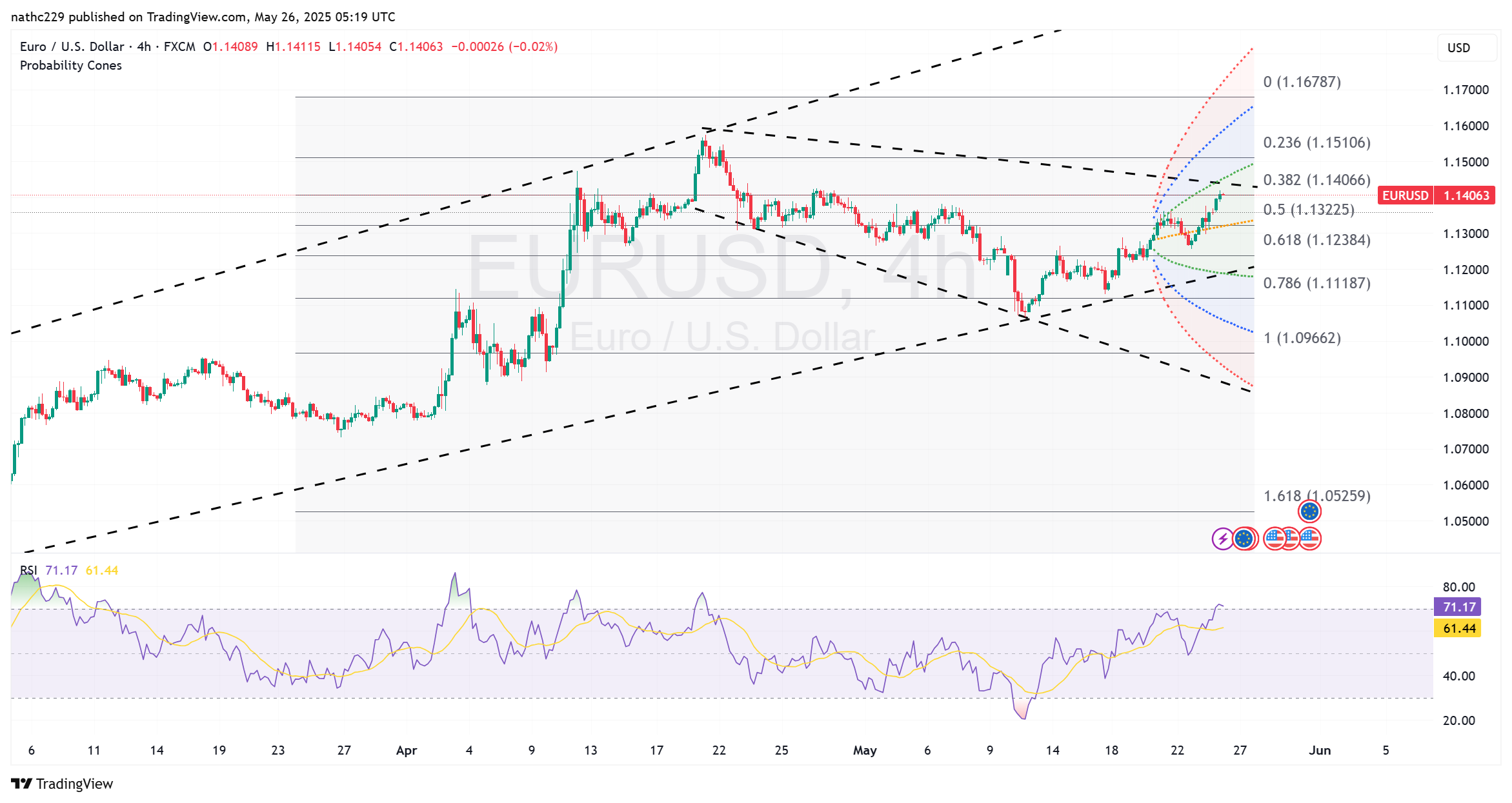EUR/USD bulls cautious despite volatile gains; ECB rate-cut fears counteract tariff-driven dollar weakness

Technical Analysis:
EUR/USD traded sharply higher in volatile Friday sessions, initially soaring to a fresh 12-session peak at 1.1375 in response to U.S. President Trump's proposal of 25% tariffs on Apple products manufactured abroad. However, bullish momentum quickly dissipated after the announcement of far-reaching 50% tariffs on EU goods, sending the pair tumbling sharply to a low of 1.1299. Despite this volatility, EUR/USD managed to rebound and close firmly higher near 1.1360, registering a solid 0.71% daily advance, as markets ultimately reacted negatively to U.S. assets—driving yields and the dollar lower and providing key support for the euro.
Technically, EUR/USD remains positively inclined in the short term, clearly supported by rising RSI momentum indicators on daily charts and by successful closes above critical short-term moving averages, notably the 5-day MA (near 1.1305) and the 21-day MA (near 1.1280). The recovery from sub-1.1300 lows emphasizes the robust buying interest at these key support levels, providing bulls with some short-term comfort. Immediate resistance remains at Friday's peak at 1.1375, a level which, if breached decisively on a closing basis, would target April highs near 1.1450. However, traders must remain vigilant, as the significant intraday reversals and long upper wick on the daily candle signal intense market uncertainty and substantial selling pressure at higher price levels.
From a fundamental angle, renewed tariff threats have reignited concerns regarding eurozone growth and potential ECB policy responses. The widening of German-U.S. 2-year yield spreads to around -221bps significantly increases the dollar’s yield advantage, potentially limiting the sustainability of EUR/USD gains. The sharp rise in Euribor futures further highlights market fears that increased tariffs may prompt the ECB to adopt a more aggressive easing stance. Such dynamics create competing crosswinds for EUR/USD, with bearish pressure from widening yield spreads potentially offsetting bullish pressure from investors’ reduced appetite for U.S. assets amid escalating tariff threats. Given these complexities, EUR/USD is likely to remain range-bound and highly sensitive to tariff-related news, trading primarily between solid support near 1.1280–1.1300 and resistance around 1.1375 in the coming sessions.

